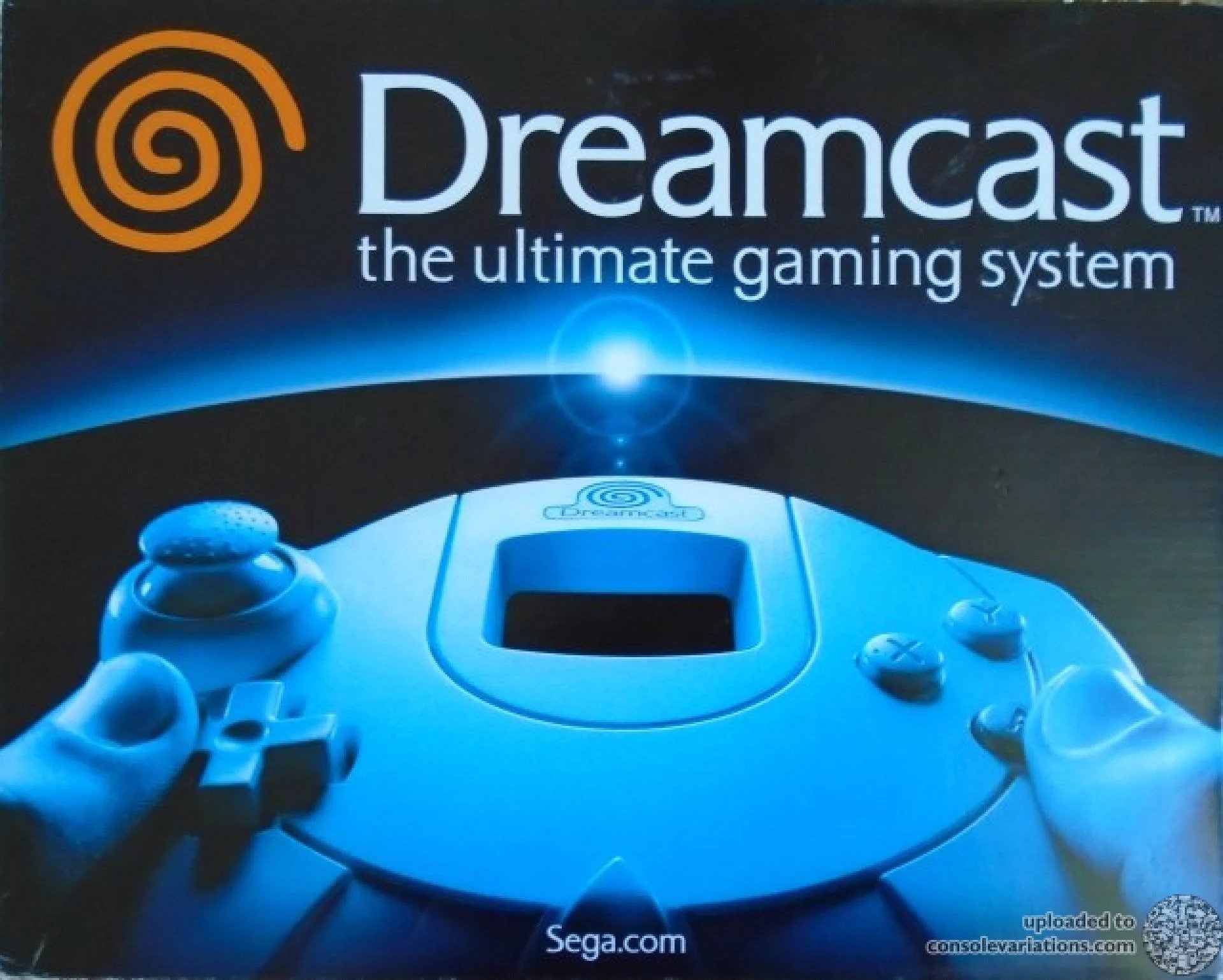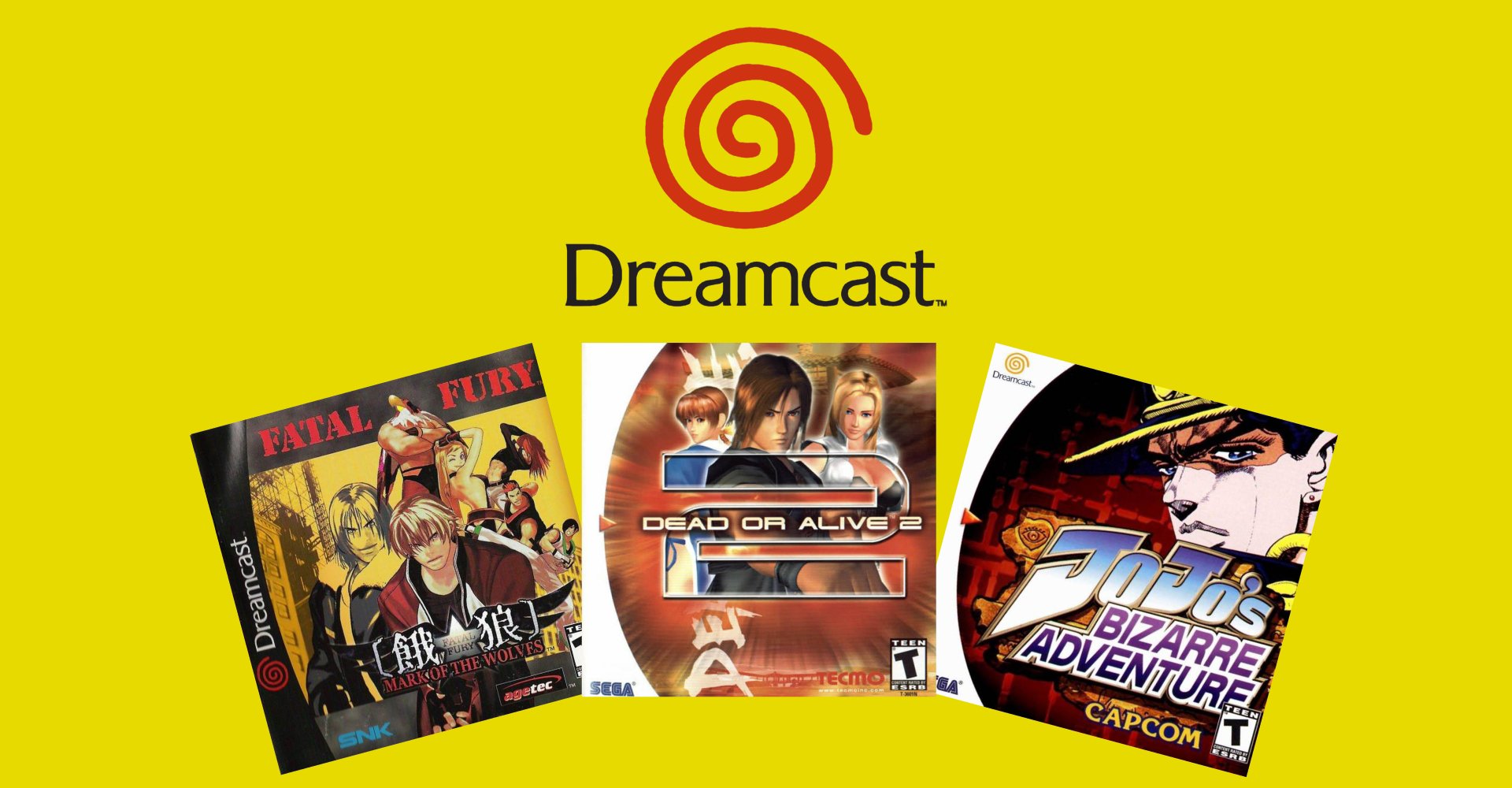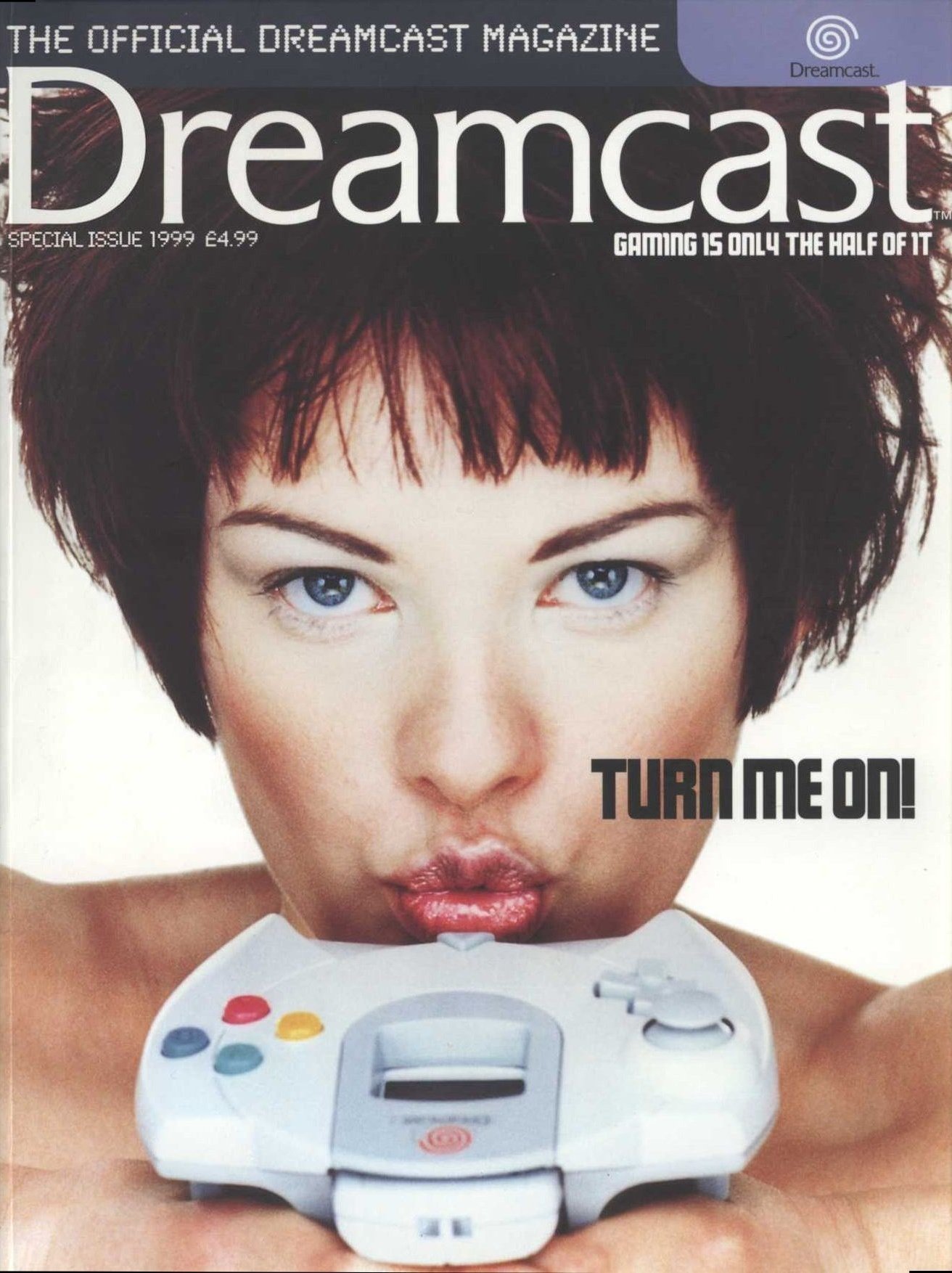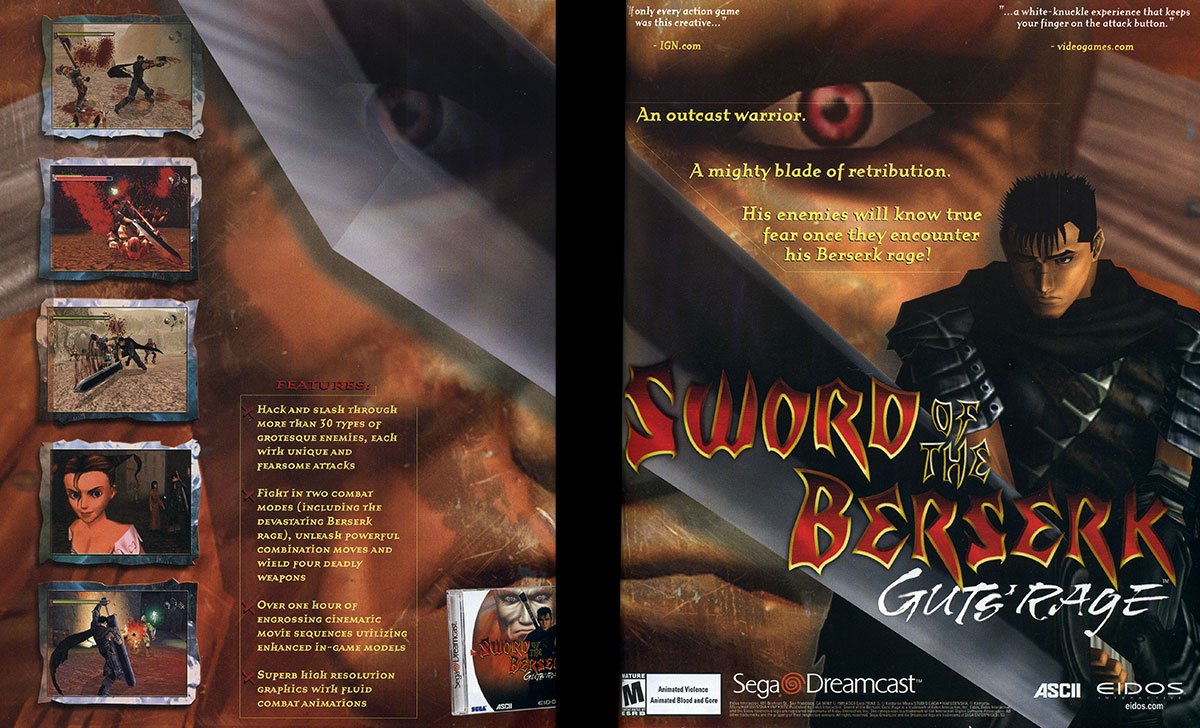SEGA’S DREAMCAST - A HARDWARE BUILT TO COMPETE, NOT TO LAST

Right next to Sony and Nintendo once stood another Japanese key competitor in the industry: Sega. Moreover, we are not talking about the charismatic blue hedgehog and the company's overall take on video games software but instead on hardware: home consoles.
Simultaneously blessed and cursed with powerful, technical and visionary hardware, the Sega's Dreamcast was active on the market and relevant for only three years spanning from 1998 to 2001, when the company decided to discontinue the project due to severe economic problems. Although very short, these three years of service were enough to create and leave a new legacy as one of the greatest console and game libraries/rosters of all time.
This article will first discuss what made the console unique before diving into the factors that led Sega to ultimately make the Dreamcast their last and final home console even 20 years later. We will be concluding the article with how Sega miraculously "survived" and what lies ahead for the company's future [particularly in terms of hardware].
Why was the Dreamcast so efficient and unique?
As mentioned, the Sega Dreamcast was way ahead of its time. One of its most substantial key perks stemmed from one of the most excellent line-ups of games at launch ever released for any home console. With 18 titles, the list included legendary games such as Sonic Adventure, The House of the Dead 2, SoulCalibur, NFL Blitz, Mortal Kombat Gold, the infamous Blue Stinger, Hydro Thunder, Crazy Taxi and more. Some of which are still running franchises that are running today. Sadly, this crazy line-up was only ready in time for the Western launch as the earlier Japanese launch was minimal in-game selection.
Alongside the console benefiting from an excellent roster of games, creating the most memorable fighting games and arcade library ever seen, it also created strong partnerships Sega created with developers like SNK and Capcom. Intending to support the diversity of the games' genres present on the console, Sega also allied with the best RPG developers and was able to release big productions like Skies of Arcadia, Shenmue 1 & 2, Grandia 2, and more. To cite a few gems released on the Dreamcast: Jet Set Radio, Space Channel 5, Power Stone, Soulcalibur, and of course, Sonic Adventures 1 & 2, which we will talk about a little bit more in the next part.
In terms of hardware, the console was mighty, even more than its main rival counterpart Sony's Playstation 2, against which it was competing particularly with more outstanding image quality and resolution, texture compression, VRAM, and overall buffering. The colorful palette offered by Dreamcast still looks good in 2022, especially with the help of a HDMI adapter. The console also competed on the number of controller slots available; the Dreamcast allowed up to 4 players to play simultaneously, whereas the PS2 only allowed 2.
One of the most memorable critical traits of the console - still to this day - is the Visual Memory Unit equipped with a D-pad, action buttons and LCD Screen. Initially placed inside the controller as a memory stick for the console, the device synchronized with the game being played to offer the player additional visibility on game information through the LCD screen's display, similar in composition to the later released Nintendo's WII U. Equipped with a battery, the VMUs allowed the players to do mini-games on compatible software, most of the necessary licenses offered such but not all. It is compatible with many different mods, hardware, and software since it runs on Windows CE.
Another critical technical point which made the Dreamcast an iconic console was its access to internet networks. Equipped with online connectivity hence internet access, Sega encouraged their developers to create multiple compatible games and even MMOs like Phantasy Star Online for their innovative home console which allowed its user to browse the internet [with the use of a phone cable].
Initially, the console was sold cheap, first priced at 250$ in Japan at launch, which was $50 dollars cheaper than the PS2. The director of the western division forced the company to lower the console's price to an even cheaper price of $200 for its North American launch.
Why did Sega fail? What went wrong?
So, with all of the benefits the Sega Dreamcast provided, it somehow stilly only had a short lifespan. The absence of a built-in DVD player was deadly to the console sales and was a poor choice. Since its main competitor, the PS2 [and the upcoming Xbox] was equipped with one, the console was in jeopardy. What is interesting, and more so frustrating for Sega is that they were in fact the first company within the industry to mention the use of in-built movie players using DVDs as early as 1995. They came up with the idea and decided not to implement it, leaving it to the competition to use against them.
One of the critical problems leading the Dreamcast to discontinuity was piracy. Compatible with Windows CE, combined with Mil-CDs and the overflowing appearance of Boot CDs, the console was insanely easy to hack. Individuals started to buy the console with the intent of hacking it and its entire game library. Highly vulnerable to piracy, people started bootlegging SEGA's costly developed games at an insane rate. After investing millions of dollars in the development of AAA games like Shenmue, having their player base downloading these expensive games for free was a critical hit to their sales revenues and thus the overall profit. It was vital for Sega to invest in new franchises and exclusivities to compete against Sony, but they all ended up in the hands of hackers at no cost. A great time for burning/copying CDs, just not for Sega.
Not cost-efficient, the price of manufacturing one Dreamcast is estimated at precisely $250.90 against $199.90 of the selling price. Bear in mind that the above price cost of $250.90 did not include marketing costs, a domain in which Sega invested absurd amounts, both in its home country and in America but particularly more in the latter.
The video game industry was moving fast, with consoles released every year or two maximum from various key manufacturers/competitors in the scene. Another hard factor for their fall was the overall competition in the industry at this time against the giant Sony and the brand new console, the legendary and globally acclaimed Playstation 2. The Dreamcast was indeed powerful, but not enough to compete against the new upcoming competitors: Nintendo's Gamecube and Microsoft's Xbox [which made a successful new entry in the industry], both released just a few years later in 2001-2002 in Japan and USA respectively.
Sonic was the main game that gamers wanted to see more of on their home console, unfortunately - simultaneously, it was also a game license which was significantly dropping in interest for the gamers, affecting sales and revenues. The success of Sonic Adventure came at a tremendous cost for its mother company, a project that took years and a considerable investment of money to achieve. Unable to release strong enough games within the Sonic franchise, it left players with the feeling of not being able to have what they wanted, always looking up to the day they would hear news of an upcoming game which never came after Sonic Adventure 2.
Internally within the business the Sega Dreamcast would also start to fall due to poor decision making. The management team was stuck with a long-term vision for success and rentability, relying on heavy investment, which hopefully should have brought profit over the long run. Sega made numerous promotional/marketing campaigns and invested absurd amounts in games licenses such as the infamous Shenmue, which cost Sega over 50 million dollars. In addition to these internal issues that the company was going through locally, there was abysmal communication between the western team and the Japanese headquarters, emanating from a lack of trust between Japan and the US due to multiple events/misunderstandings, non-consulted decision making causing overall brand perception issues.
Hence, Sega quickly accumulated debts and money issues in all active continents. Combined with the economic crash of the Japanese economy in 2000, it left the management team no other choice than to close the doors of their once brilliant company forever.
How did Sega miraculously "survive", and what lies ahead for the company's future?
The billionaire president of Sega, Mr Okawa, was nurturing a good relationship with the American company Microsoft [hence all the compatibility with Mil-CDs and Windows CE]; the latter company was progressively investing more and more into the video game industry with already released IPs such as the critically acclaimed Age of Empire series, as well as smaller IPs like Flight Simulator. During the late 90s, Microsoft was planning to collaborate with Sega to tap into the home console market, but with the Dreamcast failing, Sega was going down along with their relationship.
It was then that Microsoft decided to create their competing hardware: Xbox. It is important to mention their partnership because the console is seen as the spiritual successor of the Dreamcast. With careful due diligence and analysis of case studies throughout the good and bad of the Dreamcast, Microsoft was able to learn from Sega's mistakes and create a powerful and underrated console following the steps of its spiritual predecessor. In a way, the vision of Sega's Dreamcast keeps on living still to this day through the Xbox series.
While Sega started to crawl into debt, multiple companies offered to purchase them, including Microsoft. Nevertheless, at this point, the perception of the Sega Japan division towards the West was at its lowest; the company would have preferred closing doors rather than accepting this deal.
Mr Okawa donated millions to help the company offset abandoning the Dreamcast console for $370million. Two years later, Mr Okawa, who was suffering from cancer, decided to make another and final donation of 695 million dollars from his deathbed, accumulating over one billion $ in donations to save Sega.
While he was still business active, Mr Okawa had tried to get Microsoft to implement complete compatibility with Dreamcast software and CDs. This merging is something that would have changed everything for the entry and impact of the Xbox in Japan and Asia in general. Unfortunately, it never happened. Instead, Microsoft agreed to buy all the publishing rights from most Dreamcast game libraries; this is why all the games developed during the console's death were exported to the Xbox. The list includes Gun Valkyrie, ToeJam, Jet Set Radio sequel and reboots, Panzer Dragoons, Crazy Taxi, Earl, Shenmue 2, Sonic Heroes, which was available on Windows PC as well and even Peter Molyneux's Fable, which was initially planned to release on Sega's Dreamcast, and many more.
It is rumored that Isao Okawa even pitched a collaborative project of a new console to Bill Gates. Additionally, it is easy to see similarities in designs: the bulkiness of both consoles, the big-sized controllers, the colorful graphic palette, the combination of multiple games genres and libraries and more.
Apart from being "spiritually survived" by the Xbox series, today, the company makes money by selling only video games and a few retro hardware. Their revenues seem to be split into four categories: Original IPs, mobile gaming, retro hardware, and arcades. Nowadays, they are most famous for the following games: House of the Dead, Warhammer 40000: Space Marine, Phantasy Star Online, Yakuza, Sonic, Total War, Company of Heroes, Football Manager, Virtua Fighter, Super Monkey Ball, Demon Slayer, Bayonetta, Vanquish, Valkyria, Alien Isolation, Endless Dungeon which is coming soon and all of their retro arcade library [+Sega Vintage].
Written by Guillaume W. Vincent




















